Who doesn’t like a good cheese? But if you really want to enjoy an unforgettable culinary experience, try Italian cheeses! Italy is home to a wide variety of cheeses, each with its own unique flavor and texture. From the famous Parmigiano Reggiano to the soft and creamy burrata, Italian cheeses are a delicious addition to any dish. If you haven’t yet experienced the delight of Italian cheeses, let us persuade you to delve into this culinary world. In this article, we will explore the 10 most popular Italian cheeses that will surely make you salivate – get ready to be seduced by the taste and texture of Italian cheeses!
Top 10 Most Popular Italian Cheeses
Italy is known for its delicious food, and one of the country’s most prized culinary gems is its wide variety of cheeses. From the famous Parmigiano Reggiano to the mild Gorgonzola, Italy has something to satisfy every taste. In this article, we will explore the 10 most popular Italian cheeses.
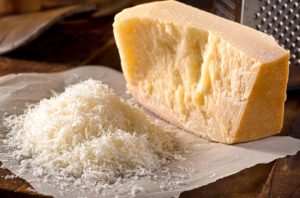
1.Parmigiano Reggiano:
This cheese, also known as “Parmesan”, is one of the most popular cheeses in Italy. It is a hard, grainy cheese, ripened for at least two years, and is mainly used for grating and sprinkling on pasta and salads.
The words Parmigiano-Reggiano on the rind mean that the cheese was produced in Italy, in one of the following areas: Bologna, Reggio Emilia, Mantua, Modena or Parma (where the name of this cheese comes from).
Under Italian law, only cheese produced in these provinces may bear the label “Parmigiano-Reggiano”, and European legislation classifies the name, as well as the translation “Parmesan”, as a protected designation of origin.
In Italy, DOC (Denominazione di Origine controllata) laws aim to preserve the integrity of traditional Italian food products by guaranteeing their taste and quality. Therefore, in the European Union, according to the DOC regulations, Parmesan and Parmigiano-Reggiano are the same cheese.
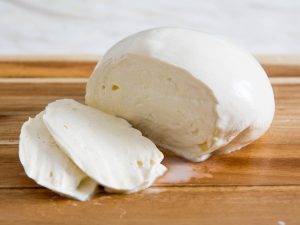
2.Mozzarella:
This soft and creamy cheese is one of Italy’s most versatile cheeses. It is often used in pizzas, salads, sandwiches and pasta dishes. Buffalo mozzarella is especially popular and has a more pronounced flavor than the cow variety.
Mozzarella is a southern Italian cheese traditionally made from Italian buffalo milk using the pasta filata method.
Fresh mozzarella is usually white (like bocconcini), but when seasoned it takes on a light yellow color depending on the animal’s diet. Because of its high moisture content, it is traditionally served the day after it is made, but it can be kept in brine for up to a week or more if sold in vacuum packs. Low moisture mozzarella can be kept refrigerated for up to one month, although shredded low moisture mozzarella is sold with a shelf life of up to six months. Mozzarella is used for most pizzas and various pasta dishes, or served with tomato and basil slices in Caprese salad.
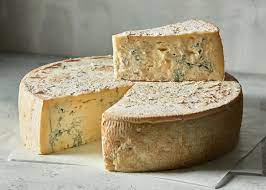
3.Gorgonzola:
This blue cheese is known for its strong flavor and smooth, creamy texture. It is often used in pasta dishes and salads and is a popular accompaniment to fresh figs and pears.
Gorgonzola is an Italian PDO blue cheese made from unskimmed cow’s milk. It can be buttery or firm, crumbly and quite salty, with a “bite” to its blue veining. Outside the EU and countries that recognize protection of geographical origin, the name “Gorgonzola” can legally be used for similar cheeses, and only the full Italian name refers unambiguously to Gorgonzola PDO. It is a cheese famous for its spicy flavor.
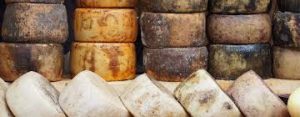
4.Pecorino Romano:
This hard sheep’s cheese originates from Rome and has a salty and spicy flavor. It is perfect for grating over pasta and salads and can also be enjoyed on its own as an appetizer.
Pecorino Romano is a hard, salty Italian cheese, often used for grating, made from sheep’s milk. The name “pecorino” simply means “sheep” or “sheep’s” in Italian; the name of the cheese, although protected, is a simple description rather than a trademark: “formaggio pecorino romano” is simply “sheep’s cheese from Rome”.
Although this variety of cheese originates from Lazio, as its name also indicates, most of its actual production has moved to the island of Sardinia. “Pecorino Romano” is an Italian product with a name recognized and protected by the laws of the European Community.
Pecorino Romano was a staple food in the diet of the legionaries of ancient Rome. Today it is still made according to the original recipe and is one of the oldest cheeses in Italy. On the first of May, Roman families traditionally eat pecorino with fresh broad beans during a daily excursion through the Roman Campagna. It is used mainly in central and southern Italy.
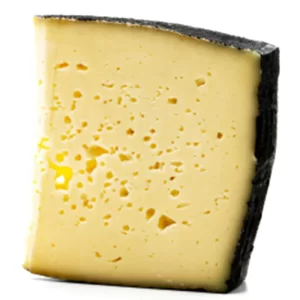
5.Asiago:
This cow’s milk cheese has a mild flavor and is often used in pasta dishes and salads. Young asiago is mild and creamy, while mature asiago has a more pronounced flavor.
Asiago is a cow’s milk cheese, first produced in the Italian town of the same name, which can take on different textures depending on its ripening, from the softness of fresh Asiago (called Asiago Pressato, meaning “pressed Asiago”) to the crumbly texture of aged cheese (Asiago d’allevo, meaning “farmhouse Asiago”). Aged cheese is usually grated on salads, soups, pastas and sauces, while fresh Asiago is sliced to prepare paninis or sandwiches; it can also be melted in various dishes and melons. It is classified as Swiss or Alpine type cheese.
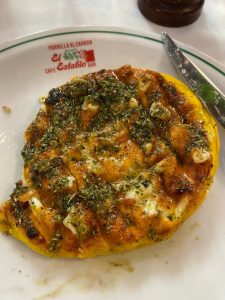
6.Provolone:
This cow’s milk cheese is often used in sandwiches and pizzas. It has a mild, creamy flavor when young, but becomes stronger and spicier as it matures.
Provolone is an Italian cheese. It is a cured spun paste cheese originating from Campania, near Vesuvius, where it is still produced in the shape of a pear, sausage or cone 10 to 15 cm long. Provolone type cheeses are also produced in other countries. Currently, the most important provolone production region is northwestern Italy and the city of Cremona. Provolone, provola and provoleta are versions of the same basic cheese. Some versions of provolone are smoked.
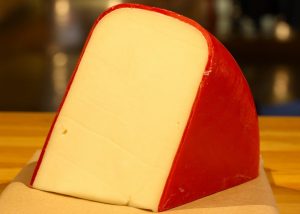
7.Fontina:
This cow’s milk cheese has a mild, creamy flavor and is often used in pasta dishes and salads. It is also a popular melting cheese and is often used in sandwiches and pizzas.
It is a cow’s milk cheese, first produced in Italy. Over time, its production has spread throughout the world, including the United States, Denmark, Sweden, Canada, France and Argentina.
Fontina is a cheese with a semi-soft to hard texture and a mild to medium sharp flavor. It has a butterfat content of about 45%. The characteristic flavor of Fontina is mild, but distinctly nutty and salty. Fontina from Sweden, Denmark and the United States have a milder flavor, a softer texture and more holes than those from Italy.
Fontina cheese has been made in the Aosta Valley in the Alps since the 12th century. Fontina produced in the EU can be identified by a seal of the Consorzio (Consortium) of the Matterhorn which includes the inscription “FONTINA”.
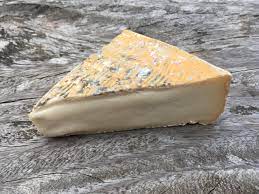
8.Taleggio
This cow’s milk cheese has a strong, sharp flavor and a smooth, creamy texture. It is often used in pasta dishes and salads, and is also an excellent melting cheese.
It is a semi-soft, washed-rind, spread-ripened Italian cheese named after the Val Taleggio. It has a thin rind and a strong aroma, but its flavor is comparatively mild, with an unusual fruity touch.
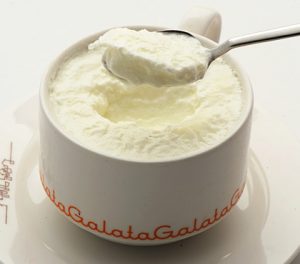
9.Ricotta
This soft, creamy cheese is made from buttermilk and is often used in pasta dishes, desserts and pasta fillings. It is also an excellent cheese spread and is often used in sandwiches and breads.
It is an Italian whey cheese made from whey from sheep, cow, goat or Italian water buffalo milk left over from the production of other cheeses. Like other whey cheeses, it is made by coagulating the proteins left over after casein is used to make cheese, in particular albumin and globulin.
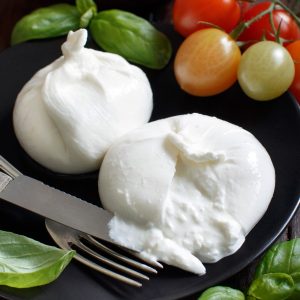
10.Burrata:
This fresh cheese is soft and creamy on the outside and has a creamy center. It is perfect for salads and pasta dishes and is a delight when combined with fresh tomatoes and basil.
It is an Italian cow’s milk cheese (sometimes buffalo) made with mozzarella and cream. The outer cover is solid cheese, while the inside contains stracciatella and cream, which gives it an unusual and soft texture. It is typical of Puglia.
Italian cheeses are an important part of Italy’s culinary culture. From Parmigiano Reggiano to burrata, each cheese has its own flavor and texture that makes them unique.
¿How many types of cheese are there in Italy?
It is estimated that there are more than 400 different types of cheese in Italy. All different in textures and flavors, which make the gastronomic culture of the country very rich.
¿What is the most famous cheese in Italy?
The most famous cheese in Italy is Parmigiano Reggiano, also known as the “King of Cheeses”, for its unique and particular flavor.
¿Which cheeses stand out in Italian cuisine?
Some of the most prominent cheeses in Italian cuisine include Parmigiano Reggiano, mozzarella, gorgonzola, pecorino romano, asiago, provolone, fontina, taleggio, ricotta and burrata.
¿What is Italian cheese similar to Roquefort cheese called?
Italian cheese similar to Roquefort cheese is called gorgonzola.
¿What is buttery cheese called in Italy?
Buttery cheese in Italy is called Burrata.
¿What is ricotta in Italy?
In Italy, ricotta is a soft, creamy cheese that is made from whey. It is often used in pasta dishes, desserts and pasta fillings.
¿What is Italian cream cheese called?
Italian fresh cheese is called mascarpone. There are also other fresh cheeses such as burrata and stracciatella, which are similar to mozzarella but with an even softer and creamier texture in the center.
In conclusion, the variety and quality of Italian cheeses is impressive. Italian cuisine offers a wide range of cheeses to suit all kinds of tastes and recipes. Italy’s gastronomic heritage is reflected in its cheeses, which are made with ancestral techniques and high quality products, resulting in unique and delicious products that have conquered palates around the world. Each Italian cheese has its own personality and flavor, making it an essential part of Italian culinary culture and a delight for cheese lovers around the world.

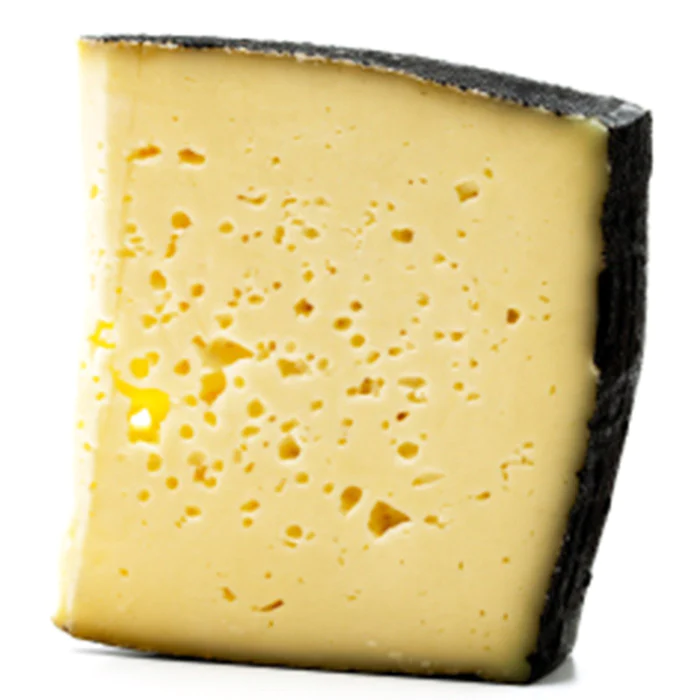

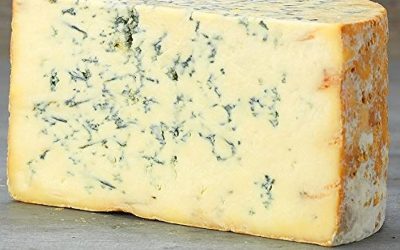
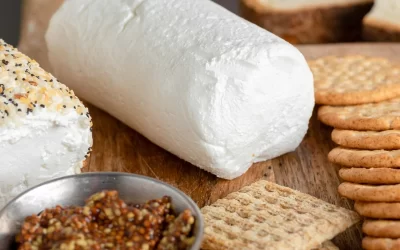
0 Comments